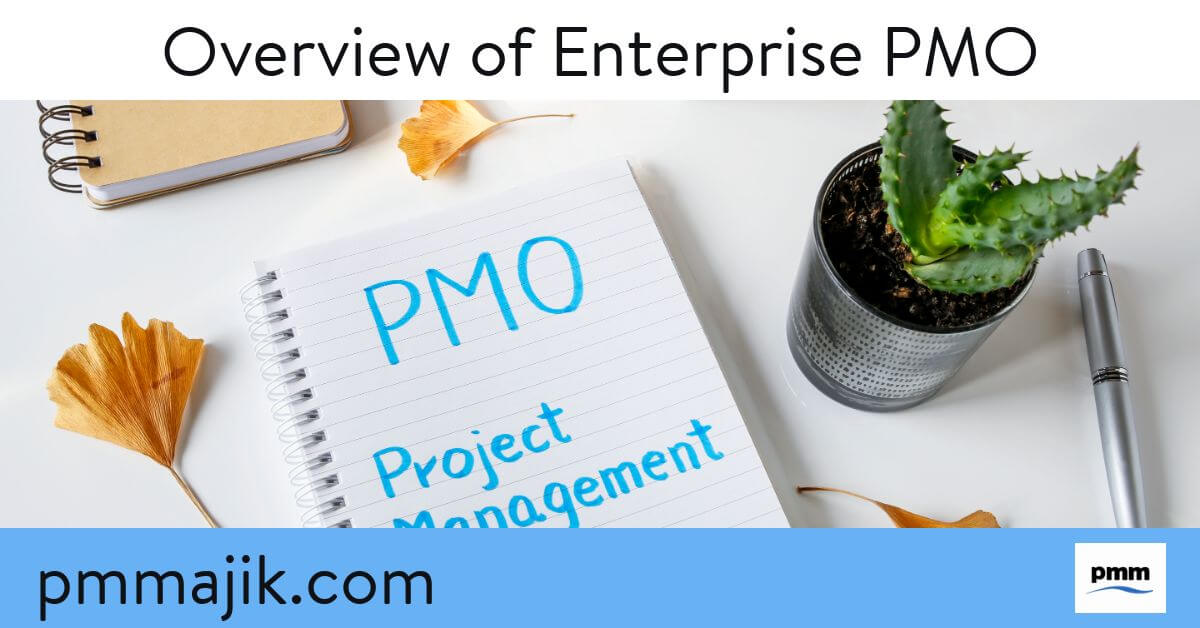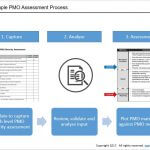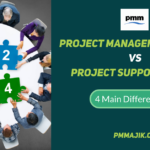Project Managers are increasingly asked to show that their projects provide value to the overall organisation and meet its strategic objectives. This has led to the rise in Enterprise Project Management Offices (EPMO), leaving the traditional Project Management Offices (PMO) in the shadows.
What is an EPMO
The Enterprise Project Management Office (EPMO) operates at strategic level and sits outside of any operational business function. It collaborates directly with executives and has responsibility for all projects across the organisation.
EPMO’s are particularly common in multi-national, enterprise level organisations where there is a global reach.
What does an EPMO do?
The main goal of the EPMO is to provide standardised rules and expectations across all project management functions with the organisation. It ensures that all projects are aligned with the business strategy, standard and policies.
The EPMO director is responsible for monitoring the progress of projects across the organisation and providing reports to senior executives. They are also responsible for the distribution of resources across projects, including material and staff resources, helping the organisation to achieve its overall objectives.
EPMO Vs. PMO
Whilst it undertakes the same responsibilities of the traditional Project Management Office (PMO), the EPMO also takes a lead role in aligning projects with the strategic goals of the organisation.
EPMO’s operate at the highest level and manage PMO offices across the organisation, ensuring that they all perform to the same enterprise standards.
PMO offices are restricted to the department in which they operate, and as such, the EPMO can solve wider, organisational issues that the PMO can’t.
Advantages of the EPMO
If the EPMO is adopted effectively, then there are numerous business benefits.
Decrease in project failure
The main advantage of the EPMO is that project failure rate declines. This is because projects are linked to business strategy and there is a greater risk mitigation and resolution.
Streamlined projects
Only projects that align with the organisation’s objectives will be allowed to proceed, ensuring that the organisation doesn’t take on too many projects at once.
Less duplication
Having an overview of all projects taking place means that duplicate projects can be eliminated, reducing overlap between departments and creating better visibility.
Improvement of methodology
Having one overall EPMO allows the organisation to focus on just one methodology, using best practices from across the organisation.
More effective resource utilisation
As the EPMO oversees all projects that take place across the organisation, they can identify what resources are needed and allocate them appropriately, reducing waste.
Project Manger’s can be moved to projects where their skills are best suited, rather than being contained in one area.
Disadvantages of the EPMO
Lack of support
Resistance to change is natural, and this can lead to a lack of support in leaving the status-quo of a PMO to form an EPMO, particularly if the benefits are not clearly communicated.
One size doesn’t fit all
Both organisations and project management are complex and pose unique challenges. Numerous different approaches and methodologies to project management exist because each project needs a specific set of tools. Rejecting those approaches in favour of one standardised method is unlikely to be effective.
Reduced morale
Taking a consolidated approach to project management is likely to take on a waterfall approach and as such, any proponents of agile methodology within the organisation will immediately feel alienated.
Although the skillset of Project Managers is transferrable, being moved to areas where they don’t have specialist business knowledge will lead to limited success and leave them feeling disengaged.
Should I set up an EPMO?
Setting up an EPMO will help to ensure that your projects are aligned with business strategy, eliminating one of the most common causes of project failure.
Before taking the leap to create an EPMO however, you should consider whether your organisation actually needs one.
If your organisation deals with high-complexity and multiple projects simultaneously, has a growing portfolio, have departments working on the same projects or a high project failure rate, then you may want to consider adopting the EPMO approach.
Conclusion
Whether you have an EPMO or a PMO will depend solely on the context of your organisation. Identify your organisational goals and assess how you can best meet them. This will enable you to create a plan that aligns with your business strategy






